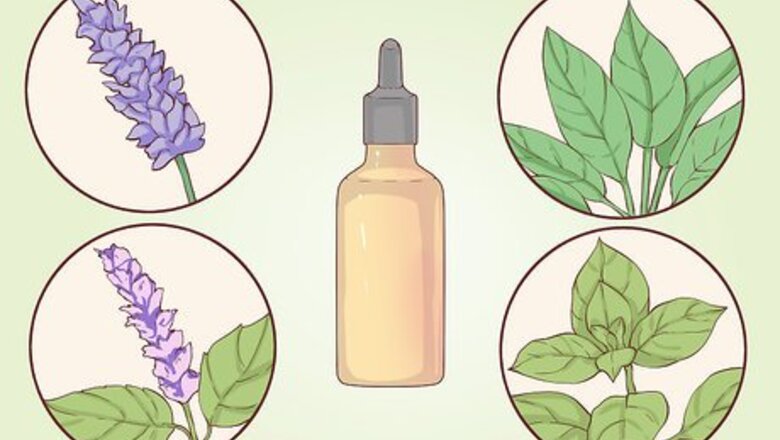
views
Formulating a Blend
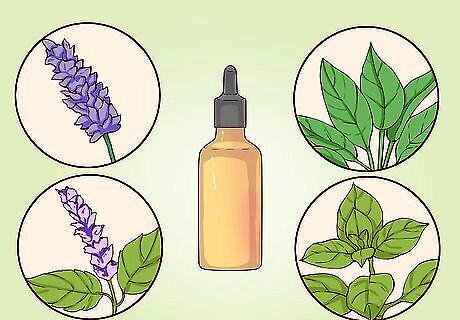
Determine what type of scent you want. Different types of scents are often used to alleviate different issues. Think about what type of scent you want. There are general categories of essential oil scent, and oils in any one category tend to mix well with their own kind. That said, you can mix scents from different categories. Try experimenting with different types of scents. Floral: Lavender, neroli, jasmine, ylang ylang, rose Earthy: Oakmoss, patchouli, pine, cedar Herbal: Marjoram, rosemary, basil, thyme Minty: Peppermint, spearmint, sage Spicy: Nutmeg, clove, cinnamon, black pepper Citrus: Orange, lemon, lime, bergamot It's always best to consult with a licensed aromatherapist when working with essential oils. They can guide you through the best practices for aromatherapy and warn you of any medical risks.
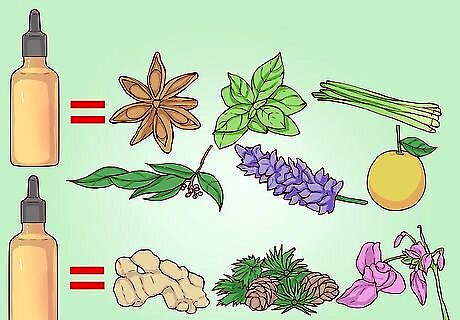
Choose top, middle, and base notes. The note of an oil refers to the length of time that it takes to evaporate. Top notes evaporate the quickest while base notes linger for a long time. If you want your oils to hold their aroma for a certain time, choose a good base note that pairs well with top and middle notes. Top notes evaporate within one or two hours. They include anise, basil, citronella, eucalyptus, lavender, spearmint, orange, and lemongrass. Middle notes evaporate within two to four hours. They include fennel, nutmeg, tea tree, jasmine, and chamomile. Base notes last for up to a few days. They include balsam, cedarwood, ginger, patchouli, and oakmoss.

Test your blend. Dip one cotton swab into each bottle of oil. You should use one swab per bottle. Hold these about a foot away from your nose, and swirl them in circles in the air. This will give you a sense of what the scent combination will smell like. If you do not like it, try removing one of the cotton swabs, and try again. This will help you find a good combination of aromas for your blend. You can also use cotton balls or fragrance testing strips to try out your scents.

Mix the oils. Once you have determined your essential oil blend, you can start adding them together. Using a pipette or dropper, drop the measured amounts of your top, middle, and base notes into a clean mixing bowl or into a glass vial. Drop the correct amount of drops as stated per the recipe you are using. If you are unsure how much to use, you can follow a few different guidelines: The 30-50-20 rule: your mixture is 30% of your top note, 50% of your middle note, and 20% of your base note. The 1-2-3 Rule: For every one drop of your base note, you have two drops of your middle note and three drops of your top note. You should mix your essential oils together first before adding any carriers or diluting agents.
Diluting Your Oils
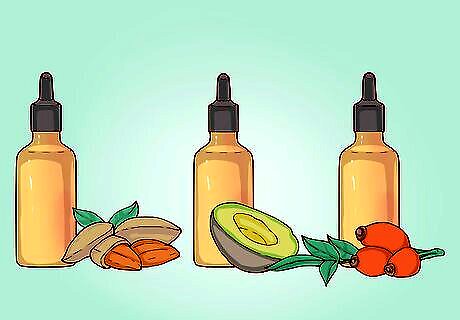
Find a carrier oil if you want to apply it to the skin. If you are applying essential oils to the skin, you will need to dilute them with a carrier oil first. Essential oils are highly concentrated, and by applying them directly to your skin without a carrier oil, you risk permanent damage to your skin. Carrier oils are typically vegetable oils. Good carrier oils include: Almond Oil Rosehip Oil Avocado Oil Sesame Oil Jojoba Oil Hemp Seed Oil Olive Oil Coconut Oil Sunflower Oil Grape Seed Oil There are very few times when you will not need a carrier oil when working with essential oils. In some cases, you can get a really significant burn if you apply undiluted essential oils to your skin.

Add a dispersing agent if you want to use it in the bath. If you are not planning to rub it directly on the skin but do want to use it in the bath, you should use a dispersing agent. A dispersing agent will help the oil spread through the bath safely. While some vegetable oils can be used as a dispersing agent, others, like coconut oil, are too thick for use in the bath. Try using an oil with a lighter, more liquid viscosity. Some good agents include: Honey Milk Jojoba Oil Sweet Almond Oil

Mix with alcohol for a perfume. Perfumes are used in smaller applications. While you can use jojoba oil for a perfume, alcohol is typically the preferred diluting agent. Use between ten and fifteen drops of essential oil blend per half ounce (15 ml) of alcohol or jojoba oil.
Completing Your Blend

Determine your proportion of ingredients. Once you have mixed your essential oils, you can add them to a carrier oil or dispersing agent, depending on your use of the oil. How much of each ingredient you mix together depends on how you are planning on using your essential oil. For massages, use between fifteen and twenty drops of essential oil blend per ounce of carrier oil. For lotions or skin oils, use between three and fifteen drops per ounce of carrier oil. For use on children, use three to six drops per ounce of carrier oil. For baths, use between two and twelve drops of oil per ounce of dispersing agent. If you are using essential oils for smelling or inhaling only, you do not need a carrier oil.

Combine the essential oil blend with the diluting agent. You can combine your ingredients in a bowl or in a bottle. If you are mixing your oils in a bowl, you should mix the oil by stirring the oil with a spoon. Wooden stir sticks may also help. If you are mixing your oils in a bottle, you can gently swirl the bottle in your hand to mix the oils.

Store in a bottle. Glass vials, bottles, and sprayers are a good way to store your essential oil blends. Amber bottles with a volume of two to four millimeters are often recommended to store essential oils. Carefully pour the blended oil inside the container; you may use a funnel if it helps. Keep the blend in a cool, dark area. Carrier oils may expire more quickly than essential oils. Blends with rosehip, sesame, or sweet almond oil can be stored for 6-12 months. Jojoba oil and coconut oil are very stable and may last indefinitely. You may also store the blended oil in the refrigerator. The exception to this is any blend containing avocado oil, which should not be stored in the fridge. Do not use if your oils smell bitter or rancid. Do not store the oils in direct sunlight or near a stove.
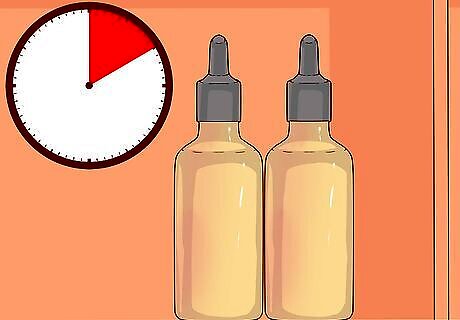
Wait a few days. The scent of an essential oil blend can change as the oils settle. Let the essential oil sit for three or four days before you try smelling it again. Note if the scent has changed significantly. This will tell you how a blend ages. By aging some of your blends, you might find more satisfying scents.




















Comments
0 comment